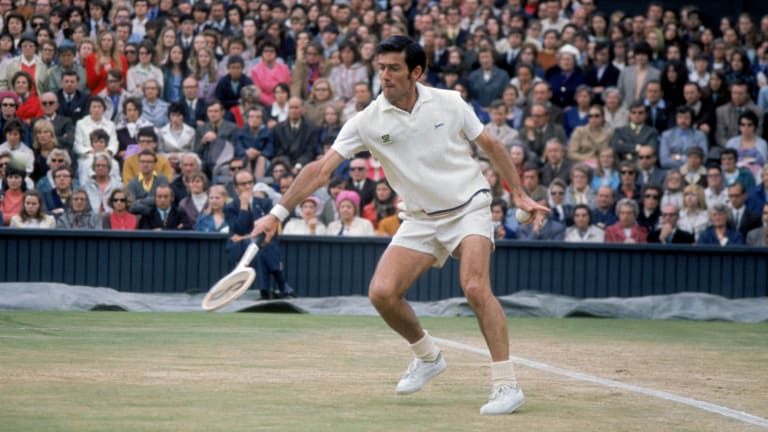Tennis Lessons
On This Day: Ken Rosewall lifts his final singles trophy the month he turns 43
By Nov 13, 2022Tennis Lessons
What is an unforced error? A meditation on the tennis player's least favorite stat
By Dec 28, 2024Tennis Lessons
The Never-Ending Serve Quest: Top players shift focus towards improved deliveries
By Feb 27, 2024Tennis Lessons
Roger Federer in primetime: TC Plus Classics to revisit 20-time Slam champ's greatest matches
By Dec 19, 2023Tennis Lessons
Winning Ugly, revisited: Brad Gilbert’s ethos returns with Coco Gauff Slam triumph
By Sep 30, 2023Tennis Lessons
On 50th anniversary of Billie Jean King's 'Battle of the Sexes' win, a push to honor her in Congress
By Sep 20, 2023Tennis Lessons
Decades before the Battle of the Sexes, Billie Jean King and Bobby Riggs spun from the same cloth
By Sep 20, 2023Tennis Lessons
50 years later, ATP Wimbledon boycott remains major tipping point moment
By Jul 13, 2023Tennis Lessons
The case for the volley game: how it might be a way to play Novak Djokovic
By Feb 26, 2023Tennis Lessons
Tracy Austin, former world No. 1, turns 60
By Dec 12, 2022On This Day: Ken Rosewall lifts his final singles trophy the month he turns 43
In 1977, defending champion Rosewall won five matches to seal the Hong Kong title—all versus opponents who were at least ten years younger than him.
Published Nov 13, 2022
Advertising
Advertising

Modeled after the forceful drive of the great Don Budge, Rosewall’s backhand had a scintilla of underspin that opponents found absolutely lethal.
© Getty Images, circa 1965